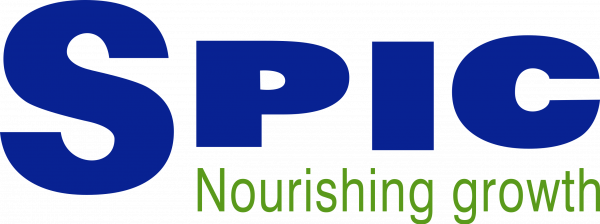Incorporated in 1969 and headquartered in Chennai, Southern Petrochemical Industries Corporation (SPIC) is one of India’s leading fertilizer manufacturers. The company’s biggest client is the government of Tamil Nadu, which purchases agro-products for subsidized distribution.
Employing 1,500 people, SPIC also has operations in oil and natural gas, pharmaceuticals, power and biotechnology applications in agriculture. Its products not only help sustain soil health, but also act as environment-friendly catalysts to increase food productivity to meet India’s demands.
At-a-Glance
SPIC’s IT systems are critical to its petrochemicals business, handling operations from materials management to shipping; but as the company’s legacy infrastructure grew, performance was falling. By deploying an SAP ERP solution running on SUSE® Linux Enterprise Server (SLES) for SAP Applications, SPIC slashed the time taken to produce reports by 99.99%, accelerating decision-making. The business also saw IT performance more than double, while virtualized infrastructure will enable power savings of 25%.
挑战
SPIC’s IT systems are crucial to its business, managing processes from materials management to shipping. However, as it grew, the company’s legacy infrastructure was becoming a brake on innovation.
The head of IT at SPIC says: “When I joined SPIC, the company had been using a non-integrated, tailor-made application running on Oracle for around 15 years. This legacy system was showing its age and required a dedicated team of five people working 24/7 to manage and maintain it.
“What’s more, when people wanted to see financial or performance information, we had to go through a slow and cumbersome process involving multiple applications to produce the relevant reports — forcing employees to wait a long time for information.
“For example, month-closing reports took about two weeks to produce — so our marketing and financial teams had to wait for the previous month’s financial information, and then rework their plans for the current month accordingly. This slowed down decision-making across the business.”
Aware that these sluggish, cumbersome processes were holding it back, SPIC decided to adopt a high-performance enterprise resource planning (ERP) system.
“Choosing SUSE Linux Enterprise Server to run our SAP technology was the correct decision for our business — we’re now on the right track for further successful expansion.”
SUSE 解决方案
SPIC evaluated a number of products before selecting SAP Business Suite 4 SAP HANA (SAP S/4HANA), running on SLES for SAP Applications.
“We talked to several companies to get a sense of what would best suit our needs,” says the head of IT. “We were impressed by the security and flexibility of the SUSE solution, as well as the high level of experience and availability of both the SUSE and SAP teams.”
SLES has a first-rate reputation as the leading Linux distribution for enterprise organizations running SAP. It is performance-optimized and configured to provide the best possible support for SAP applications, and it is regularly updated with new optimizations as SAP releases new versions of its products.
By choosing SAP S/4HANA, SPIC benefits from the latest SAP functionality built on the in-memory SAP HANA data platform for accelerated business processes. SPIC opted for two modules initially: SAP S/4HANA Simple Logistics and SAP S/4HANA Finance — giving the company integrated access to all business data and streamlining finance and logistics processes for greater efficiency and flexibility.
As part of the adoption of SAP HANA, SPIC used the Kernel-based Virtual Machine (KVM) virtualization technology built into the SUSE Linux Enterprise platform. With five virtual servers running on each of three new physical servers, the company has been able to eliminate 15 legacy servers — reducing complexity, boosting ease of management and cutting costs.
The head of IT says: “Change after such a long time is never easy, but we haven’t had any issues since moving to the new solutions, and our team has been impressed by the high quality of SUSE’s documentation.”
成果
With SAP S/4HANA running on SLES for SAP Applications, SPIC benefits from fast, reliable support for its business processes.
“In the past it took at least eight hours to run a report, whereas now we get them at the click of a button,” says the head of IT. “This cuts time spent waiting for reports by around 99.99% — accelerating planning and decision-making.”
SPIC is impressed by the high performance, flexibility and security of its new solutions, which enable the company to run smoothly and at reduced cost.
“We have far more control over access levels since moving to the new platform, boosting security,” says the head of IT. “We’ve also seen performance more than double, and we need only three people to maintain the SAP landscape, versus five for the legacy system.”
What’s more, SPIC estimates that using KVM virtualization to decrease the number of physical servers it runs will cut energy costs by around 25% — good for the environment, and for its bottom line.
“Choosing SLES to run our SAP technology was the correct decision for our business — we’re now on the right track for further successful expansion,” says the head of IT.
